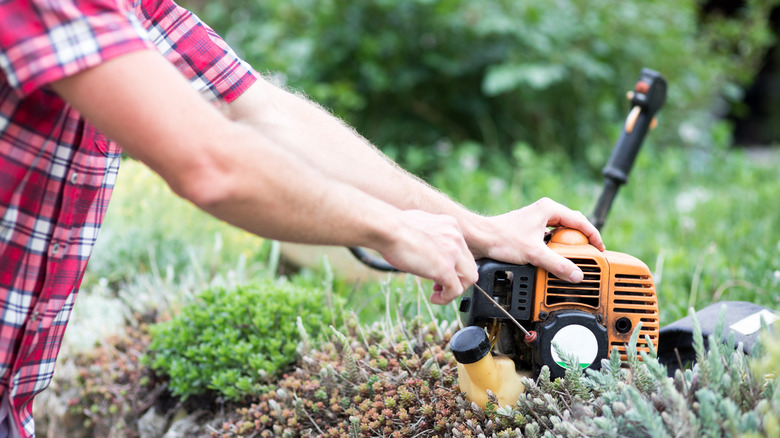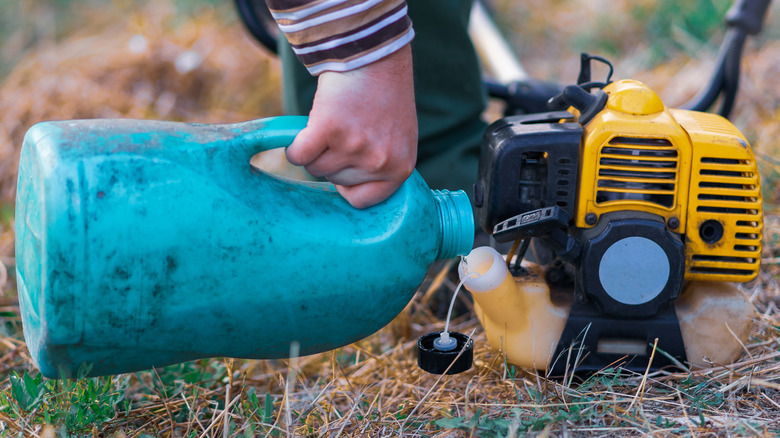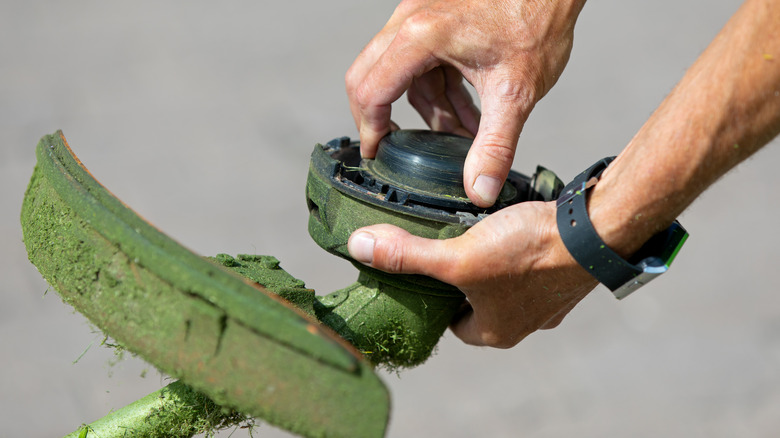How To Start A Stihl Weed Eater (& Common Mistakes To Avoid Making)
Having a yard usually means maintaining the overgrown grass that springs up next to your flower beds and garden borders. Or, maybe you've got a plot of tall weeds that needs cut down. It's time to whip out your Stihl weed eater and get to work. There are various types of Stihl weed eaters (also known as Stihl trimmers), but most of them start the same way unless it's a battery-powered weed eater. Before you do anything, check the tank to make sure it has gas in it. Then flip your power switch, press the fuel bulb five times, put the choke in the right position, and pull the rope until it tries to start. If it's still not working, you'll need to take further action before you can start weed eating.
Stary by protecting yourself with the proper PPE (personal protective equipment), including safety glasses or a face shield, gloves, long shirt and pants, and closed-toed shoes or boots. Start your weed eater far away from people and foreign objects. It's also best to prevent the head of the weed eater from being directly on the ground to avoid doing major damage to your lawn. Sometimes the Stihl weed eater won't start or run at full throttle, or perhaps it dies midway through a job. Following and referring to the user manual for your device will help you avoid these common mistakes. However, there are other factors at play that influence how easily your Stihl weed eater will start.
Avoid these common mistakes
If your weed eater isn't starting, make sure that there is fuel in it. For your Stihl weed eater, Stihl recommends using their Stihl MotoMix, a fuel premixed with ultra-synthetic oil. Alternatively, you can use other fuel sources as long as it's a mix of mid-grade gasoline and two-cycle engine oil. If your Stihl starts and idles but turns off when you apply the throttle, you might be dealing with old gas or dirty parts. If your weed eater dies after it's been running for a period of time, something is likely clogged. But if nothing you do works in any of these scenarios, then you'll need to take your weed eater to a local authorized Stihl dealer to get it checked out and fixed.
Oftentimes, these mistakes can come down to simply making sure everything is in the correct starting position. Most Stihl weed eater models have a power switch you have to flip on. If you're starting the weed eater for the first time, then put the choke in the cold start position. If you're restarting, switch it to warm start. When the motor tries to start in either position, switch the choke to run, hold the locking trigger in the full throttle position, and pull the rope handle until it starts.
How to maintain your Stihl weedeater
To keep your Stihl weed eater in ship shape, you'll need to regularly perform maintenance and properly store it for long periods of time, like during winter. If you won't be using it again for more than 30 days, go ahead and clean it up and remove the grass from the inside of the deflector. Do a thorough inspection of all the parts, including the air filter, spark plug, cutting tool, and cylinder fins. You'll want to empty the gas tank by idling the engine until it uses up the fuel. If you're putting the weed eater away for winter, store it in a frost-free area. You can also save some ground space by hanging it up.
During the spring and summer when you're using your weed eater for razor sharp garden edges, you'll want to consistently inspect your device to keep it up and running. Replace the head as necessary and prevent it from getting clogged up by checking for accumulating debris. Inspect every part of your weed eater, including the spark plugs, air and fuel filters, and potential loose screws to make sure everything is working. If every part is clean and in good condition, and you're using fresh fuel, you shouldn't have any problems starting your Stihl weed eater when you need it.


